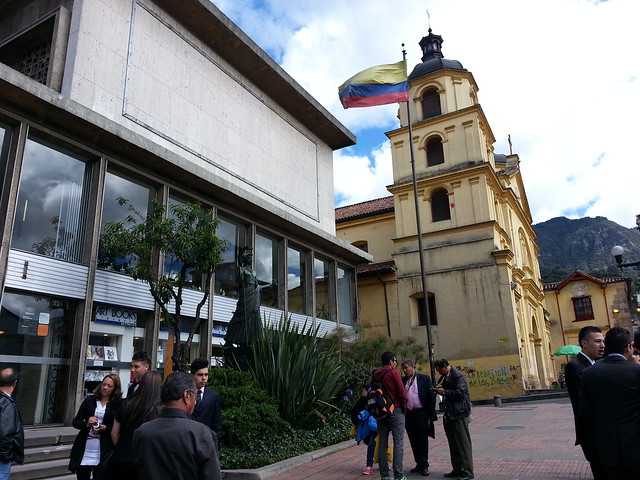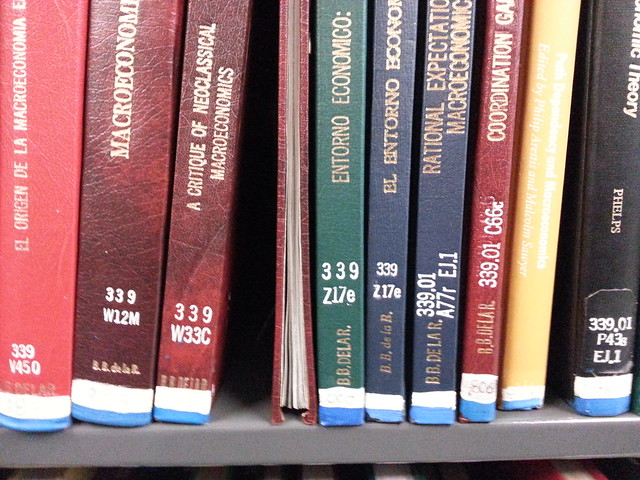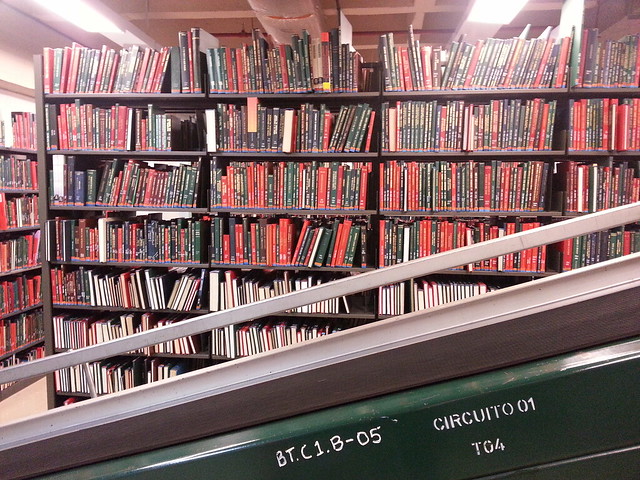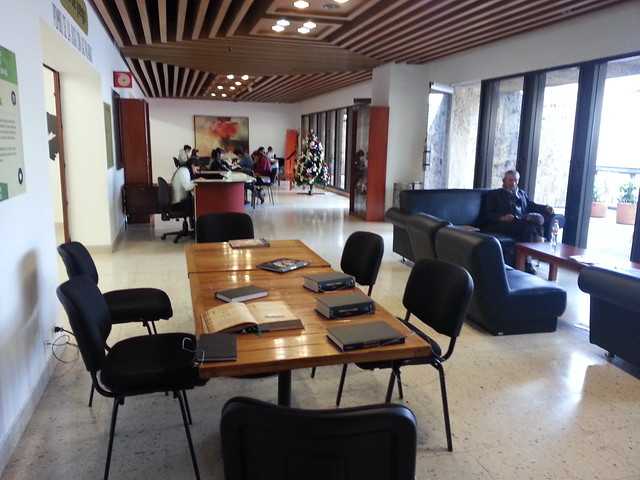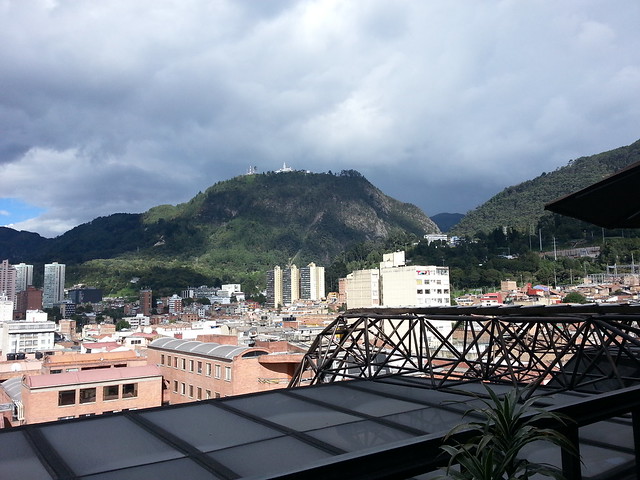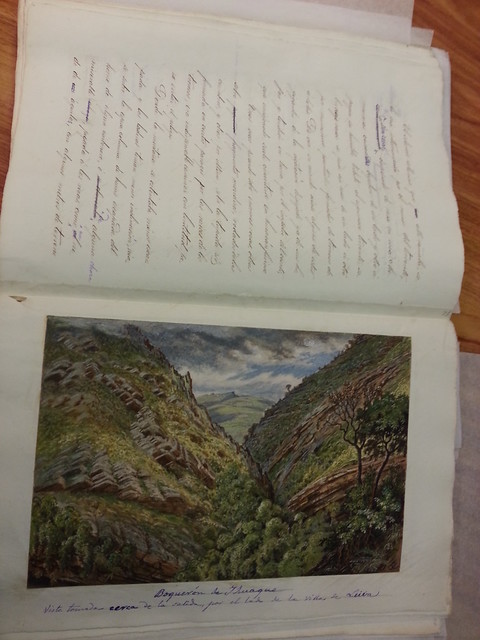December 9, 2013
A day at the Bogota Library
The Luis Ángel Arango Library and the National Library of Colombia have been bringing in speakers this year to talk about the future of libraries, the relation of digital and cultural worlds, and library innovation, partially sponsored by the U.S. State Dept. through our local embassy. Friday was my turn. What a privilege!
And I mean privilege. After spending the morning wandering around a section of Bogota that we really enjoyed — so interesting and lively, and people wer so kind to us — but we were later told we should have avoided, my wife and I met with Alexis de Greiff [twitter: ahdegreiffa] the director of the Luis Ángel Arango Library (web site here). He and I had had lunch this summer when he was touring library innovation labs in the US. Alexis has the opportunity to re-do some of the space in the National Library. It was a fascinating to hear the sorts of possibilities he’s considering, including creating an innovation lab somewhat along the lines of the Harvard Library Innovation Lab; we talked about the wisdom of including researchers in the mix, something we’d love to do here at our Lab.
Alexis has a huge opportunity because the Library is such an important part of the life of the city and of the country. It has well over a million books, making it the largest library in Latin America. And it gets an astonishing 5,000 visitors a day, making it more used than the New York Public Library. Many of the patrons are university students, so the Library has elements of both a research library (including the most complete collection in the world of materials about Colombian heritage) and a public library. It is physically located in the midst of an amazing cultural complex that includes an absolutely stunning concert hall and art museums. If you think there’s value in having art, culture, education, and knowledge intersect, come to the Luis Ángel Arango Library Library.
We got a tour of the Library from top to bottom, led by Diana Restrepo Torres, the director of technology (collections development and cataloguing), and Juan Pablo Siza Ramírez, the coordinator of digital resources. The current building was created in the 1950s and still exhibits that era’s openness and cleanliness of line. Significant additions and modifications have been made over the years. It all feels light, airy, and inviting.
About 20% of the works are on open stacks. The rest are in the basement and are fetched via a conveyor system. (The works are shelved according to the Dewey Decimal System, but have a color stripe on the spine to indicate the rough area in which they are shelved, a quick way to get works to their first stop.)
The Library includes sound-proofed rooms where people can practice playing musical instruments, a room for playing board games (with a balcony overlooking Mount Monserrate), lots of computers (but only designated areas with wifi), a rare books room, cafes, and much more. It is a big library.
And it is a library completely committed to serving its community however it can.
The Library is funded by the Central Bank (like our Federal Reserve). The Bank spends about a third of its budget supporting Colombian culture, and for this reason the Library is able to purchase cultural items that otherwise might slip out of Colombian hands. For example, Diana and Juan Pablo should us a set of volumes from the 1880s that were simply astonishingly. They are part of a ten volume set the Library recently purchased, hand-written and illustrated by José María Gutierrez de Alba, a Spanish spy who traveled through Colombia for about 13 years. The Library is going to digitize the volumes and post them online in its Virtual Library under an Open Access license. The thought that everyone will be able to see these pages makes me happy.
Juan Pablo tells me that the Spanish equivalent to "awesome!" is "grandiose!" This is a grandiose library.








